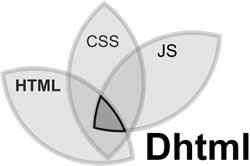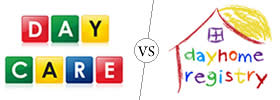Difference Between DHTML and HTML5
Key difference: DHTML is essentially Dynamic HTML. It is a new way of looking at and controlling the standard HTML codes and commands. DHTML is a collection of technologies that are used to create interactive and animated web sites. HTML5 is the fifth revision of the HTML standard. HTML stands for HyperText Markup Language. It is a well known mark up language used to develop web pages. The core aims of HTML5 have been to improve the language with support for the latest multimedia.
 DHTML is essentially Dynamic HTML. It is a new way of looking at and controlling the standard HTML codes and commands. DHTML is a collection of technologies that are used to create interactive and animated web sites. DHTML gives more control over the HTML elements. It allows one to incorporate a client-side scripting language, such as JavaScript, a presentation definition language, such as CSS, and the Document Object Model in HTML web pages.
DHTML is essentially Dynamic HTML. It is a new way of looking at and controlling the standard HTML codes and commands. DHTML is a collection of technologies that are used to create interactive and animated web sites. DHTML gives more control over the HTML elements. It allows one to incorporate a client-side scripting language, such as JavaScript, a presentation definition language, such as CSS, and the Document Object Model in HTML web pages.
DHTML also allows the pages to change at any time, without returning to the Web server first. It allows scripting languages to change a web page's look and function after the page has been fully loaded and during the viewing process. It also allows the user to add effects to their pages that are otherwise difficult to achieve.
Wikipedia list additional DHTML features, such as DHTML allows the developers to:
- Animate text and images in their document, independently moving each element from any starting point to any ending point, following a predetermined path or one chosen by the user.
- Embed a ticker that automatically refreshes its content with the latest news, stock quotes, or other data.
- Use a form to capture user input, and then process, verify and respond to that data without having to send data back to the server.
- Include rollover buttons or drop-down menus.
 HTML5 is the fifth revision of the HTML standard. HTML stands for HyperText Markup Language. It is a well known mark up language used to develop web pages. It has been around for a long time and is commonly used in webpage design. XML or Extensible Markup Language defines a set of rules for encoding documents in a format that can be read by both, human and computer.
HTML5 is the fifth revision of the HTML standard. HTML stands for HyperText Markup Language. It is a well known mark up language used to develop web pages. It has been around for a long time and is commonly used in webpage design. XML or Extensible Markup Language defines a set of rules for encoding documents in a format that can be read by both, human and computer.
HTML is written using HTML elements, which consist of tags, primarily and opening tag and a closing tag. The data between these tags is usually the content. The main objective of HTML is to allow web browsers to interpret and display the content written between the tags. The tags are designed to describe the page content. HTML comes with predefined tags. They allow one to insert images, text, videos, forms and other pieces of content together into a cohesive webpage.
Elements of HTML are the basic building blocks of all websites. HTML allows images and objects to be embedded in the webpage. It can also be used to create interactive forms. HTML also provides the means to create structured documents. It does this by denoting structural semantics for text such as headings, paragraphs, lists, links, quotes and other items. However these days, web pages are rarely designed using only HTML. HTML allows for the programmer to embed scripts written in languages such as JavaScript, which many often do. This changes the look and behavior of the HTML web pages.
The core aims of HTML5 have been to ‘improve the language with support for the latest multimedia while keeping it easily readable by humans and consistently understood by computers and devices, such as web browsers, parsers, etc.’ HTML5 supercedes HTML 4, as well as XHTML 1 and DOM Level 2 HTML. Additionally, as of December 2012, HTML5 is W3C Candidate Recommendation.
HTML5 aimed to address the variety of mixture of features introduced by various specifications by various browsers. It also aimed to address the many syntax errors in existing web documents. Additionally, it attempts to define a single markup language that can be written in either HTML or XHTML syntax. It is also backward compatible with the previous HTML versions.
The main difference between DHTML and HTML5 is that DHTML is basically Dynamic HTML. It is a collection of technologies that can be used together to make traditional static HTML pages dynamic. To do this is uses a combination of a static markup language, such as HTML, a client-side scripting language, such as JavaScript, a presentation definition language, such as CSS, and the Document Object Model. HTML5, on the other hand, is just the latest revision of HTML. It is exactly the same as HTML with a few more modernized features, such as a better support for media like video and audio tags.
Image Courtesy: mediaspins.com, w3.org









Add new comment